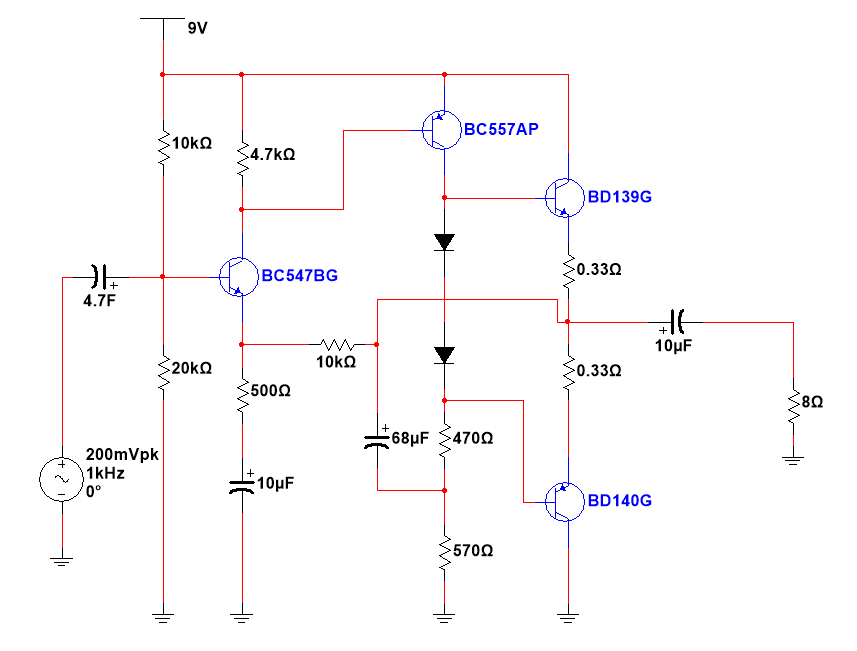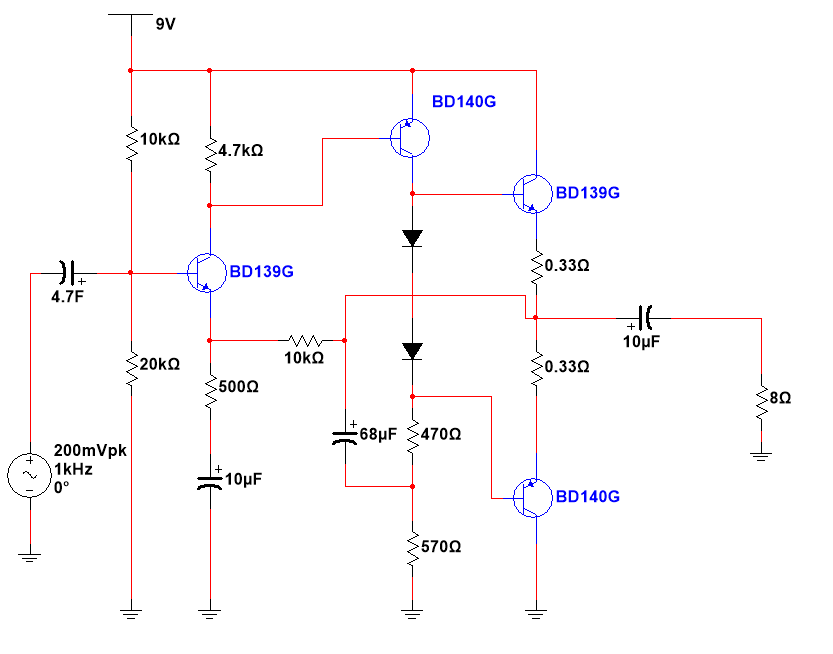I am working on a hobby project to build a small audio amplifier. Actually the idea behind the circuit is to build a 0.5W-1W audio amplifier that can be powered from a single 9V battery and have decent audio performance in terms of THD. Keep in mind that I want it to be a discrete design and don't want to use any IC.
I have built and tested the following circuit with a pure sinusoid input 1KHz and a pure 8 ohm resistive load.
The current in the driver stage (PNP) is between 6-7 mA. This seems to work best for 0.5W output. if reduced, the output distortion appears.
The output signal swing is almost 6V pk-pk before it starts to show any signs of distortion. This means that I am getting 0.5W output.
i have taken FFT of the output and tried to calculate THD with the above given working conditions, it is less than 1.5% at 1KHz. There are odd harmonics in the output at -60dB less than the fundamentamental freg.
It sounds very clean.
Here is my question:
The output bias current with no input and no load is approx 12-13mA. As soon as I connect my input sinusoid and resistive load, it shoots up. For a maximum 6 V pk-pk swing it goes up to 120mA. If the output swing is reduced, the DC current also reduces. I don't understand this behaviour. Should not the DC current be constant and not effectedaffected by signal and load variation?
Please help me understand this. its killing me. I would like to know if the way im testing the circuit and measuring the DC current is correct and what would be a typical value of bias current for such a circuit?
Thank you all very much in advance for your feedback. Regards,VK


